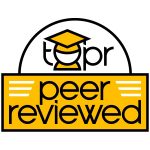Educators are encouraged to provide informative feedback to students as a way of pointing out errors in hopes that students will take action to adapt their mental models and identify gaps in learning or misunderstanding. When students are receptive of this feedback, it becomes one of the most powerful influences on learning and achievement (Walsh et al., 2015). As Jared Horvath points out in his 2019 book, Stop Talking, Start Influencing: 12 Insights from Brain Science to Make your Message Stick, students that choose to engage with feedback actually have a physical brain reaction that focuses their attention on discrepancies in their mental models and will often seek out other opportunities to reform and correct their mental model. Faculty that provide timely feedback can help students recognize important errors to address and trigger student engagement. Saundra McGuire (2016) illustrates that students who can reflect upon this feedback are better able to adapt their study and learning strategies.
Providing quality rubrics to students as a method of feedback is an excellent way to break down feedback meaningfully and grade student submissions consistently. However, rubrics that accurately reflect standards, learning outcomes or essential questions can often be difficult and overwhelming to develop. Often faculty will include easy to write, numerous checklist-type items (page count, formatting, file naming convention, timeliness) on a rubric, and consequently, students can ‘pass’ the assignment just by turning it in on time and meeting the mechanics of the assignment. Faculty are then frustrated when a student receives a grade that does not accurately reflect the quality of the student’s work.
Link to example artifact(s)
Decide on activity/assessment
When deciding on an appropriate activity or assessment, faculty should first clarify how the assignment or assessment will help students demonstrate the lesson or course objectives.
For example, if a course on Outdoor Life has a lesson objective that states students will be able to tie a square knot, what would an appropriate assignment or assessment be to demonstrate mastery of this objective? The overall course objectives may want students to:
- Recognize different types of knots when tied, including square, clove hitch, bowline, figure eight, sheet bend, taut line hitch and fisherman’s knot.
- Distinguish between different types of knots and their different purposes
- Demonstrate tying different types of knots without using directions
- Be able to recommend an appropriate knot for different scenarios
These course objectives demonstrate different levels of knowledge type (Knowledge-Comprehension, Application-Analysis, and Synthesis-Evaluation). Often faculty design appropriate activities, but struggle when designing rubrics to effectively provide appropriate feedback to students. Being able to provide criteria within the rubric that reflects the desired knowledge type will better guide faculty feedback and help students reflect upon their work.
Designing the Rubric
If faculty design an assignment to determine if students can recommend different types of knots in different situations, but create rubric criteria for identifying different types of knots and discussing differences in materials used when creating rope, faculty can be frustrated after filling out the rubric because of a mismatch in the feedback they are providing and the outcomes they want from the lesson.
Using the concise Rubric Criteria Prompts by Knowledge Type as a guide, faculty and learning designers can develop rubrics that match specific and clear criteria based on the knowledge level of the assignment. This resource is divided into the three main knowledge types: (1) Introduction of Knowledge, (2) Practice Knowledge Learned, and (3) Demonstrates Mastery of Knowledge Learned. Each level is outlined within each knowledge level and keywords and rubric criteria suggestions are provided.
In the example, for students to be able to recommend different types of knots for different scenarios they may need to:
- (Knowledge) Recognize the purpose for needing a knot
- (Knowledge) Define different knots and their characteristics
- (Application) Compare different scenarios and differentiate which type of knot is needed for each scenario
- (Create & Synthesis) Create an instructional video that correctly recommends and ties the appropriate knot for each scenario without using visual aid. Discussion and implications of each type of knot is clearly articulated.
When faculty design rubrics using appropriate action words based on knowledge levels for the assignment, they have a better chance of aligning criteria based on the lesson objectives. Students that get feedback from a well-designed rubric have a better understanding of assignment expectations and have an opportunity to reflect for improvement.
Link to scholarly reference(s)
Hattie, J., & Timperley, H. (2007). The power of feedback. Review of Educational Research, 77(1), 81-112. https://doi.org/10.3102/003465430298487
Horvath, J. C. (2019). Stop talking, start influencing: 12 insights from brain science to make your message stick. Dunedin, New Zealand: Exisle Publishing Pty Ltd.
McGuire, S. Y., & McGuire, S. (2016). Teach students how to learn: strategies you can incorporate into any course to improve student metacognition, study skills, and motivation. Sterling: Stylus Publishing, LLC.
Walsh, B., Nixon, S., Walker, C., & Doyle, N. (2015) Using a clean feedback model to facilitate the learning process. Creative Education, 6, 953-960. https://doi.org/10.4236/ce.2015.610097.
Citation
Sutterlin, J. (2020). Use criteria starters to develop rubrics based on knowledge levels to provide accurate feedback to students. In A. deNoyelles, A. Albrecht, S. Bauer, & S. Wyatt (Eds.), Teaching Online Pedagogical Repository. Orlando, FL: University of Central Florida Center for Distributed Learning. https://topr.online.ucf.edu/use-criteria-starters-to-develop-rubrics-based-on-knowledge-levels-to-provide-accurate-feedback-to-students/.
